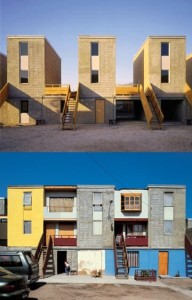The microcredit system, with all its success around the world, is an impressive solution to the lack of opportunity that keeps the poorest of the poor from climbing out of poverty. Using funds that are relatively small sums to encourage investment and the building of enterprise, with a system of trust for repayment, has the potential to eliminate poverty from society, as Professor Yunus describes[1].
When thinking ahead, what happens if/when the microcredit system becomes so successful that many of the poor households using the system are now off and running with their own enterprise or investments? One of the conditions of the microcredit system was that loans would not be used to purchase food or clothing, etc.
Another scenario that may have an interesting result is the use of microcredit across disciplines. Professor Yunus discusses how his healthcare ideas have used the system to help with one of the most demanding needs of life, and how it functions on the basis of trust when medical care must be given without payment being available up front. However, there are many other services and fields that provide necessities for those rising out of poverty. Architecture, for example, and the construction industry can provide the necessity of shelter, as well as arrangements for incorporating other family members or tenants into a living situation. Would microcredit also work for services such as architecture? Or would those services be considered enterprise for an investment?
Another idea is the concept of bartering; Professor Yunus’ interviewer discusses how Bangladesh is a homogenous culture of religion and people, with similar understandings and traditions and worldviews. If microcredit can work as a system that improves the culture and people group as a whole, instead of one person here and there, could bartering be used as a means of “income”? This could function on a larger scale than trading bread for a scarf for example. If a few people can wire electricity to your home, or provide construction labor for a new home, you could potentially repay them with another service they require. This is less applicable the more formal a society becomes, but may have potential to offset the lack of opportunities related to monetary income, and could potentially be organized in a record-keeping type manner, such as the microcredit loan system. Food for thought perhaps!
1. Dr Toh Han Chong, Interview with Professor Muhammad Yunus, SMA News, Volume 40 No. 12 December 2008.
